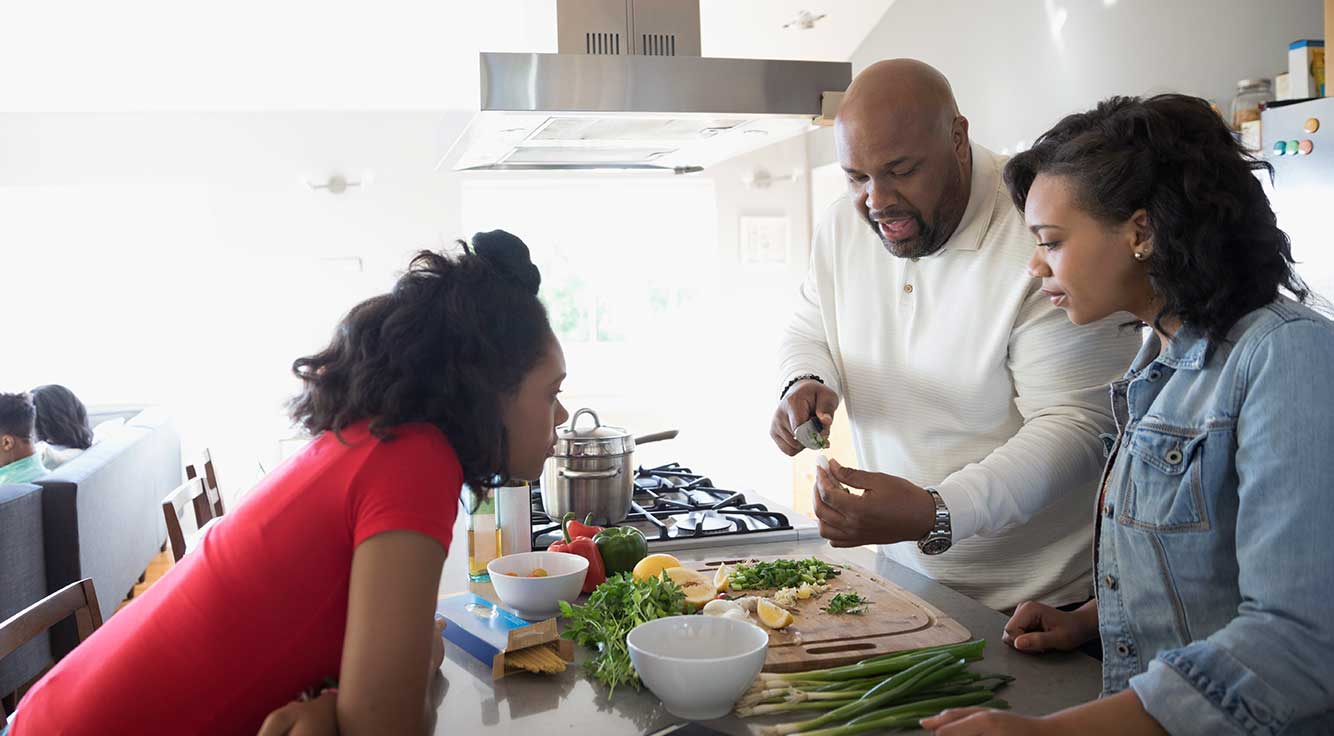
Keep your freezer foods fresh with these hot tips
Eating healthy and delicious meals is often about prep work. It’s important to stock your pantry and fridge with nutritious food options — but what about the freezer? Often the freezer is a dumping ground for leftover or extra food. Like that pound and a half of turkey you bought on sale 3 months ago. Or it’s where we throw fast, but not-exactly-healthy food, like frozen pizza and a carton or 2 of ice cream.
But having a well-stocked freezer can help you be better prepared for your next meal.
Storage tips
Before you choose foods to freeze, make sure you know the proper way to store them. Here are 6 tips to get you started.
1. Check your temp
In order to prevent the growth of bacteria, set your appliances at the correct temperature. Your freezer should be at 0° F (-18° C).1 Not sure how to tell if it’s chilly enough? Get an appliance thermometer, which is made to measure the temperature in your freezer or fridge.
2. Choose the right container
It’s important to store frozen food properly in order to preserve quality and freshness. Freezer-safe storage options include:
- Foil and plastic wrap to (tightly) wrap up meat, poultry, fish, and bread.
- Plastic freezer bags for soups, stocks, sauces, fruits, and vegetables.
- Tupperware and aluminum pans are another option if you don’t want to use freezer bags. Aluminum pans can also be useful if you’re bringing a freezer meal to a friend.
- Only use glass containers that are tempered or clearly marked as freezer-safe — otherwise they can crack. And leave space at the top of the jar — at least an inch — because liquid can expand when frozen.
No matter which type you choose, remember to go with a container made specifically for the freezer.
Pro tip: Remove excess air and use airtight containers to prevent freezer-burn.
3. Chill out
Instead of placing that still hot chili in the freezer, let your food cool first. You’ll avoid raising the temp in the freezer and reheating other items. Let your food cool slightly. Then make the fridge the first stop, so warm foods can properly cool, before making space in the freezer.
4. Consider portion size
It can be tempting to add all the chicken soup to 1 or 2 large freezer bags. But before you fill the container, ask yourself how you plan to use the food. Will you be reheating it all at once? If not, it may be better to portion out individual servings. Using smaller freezer bags, for example, also means the food will freeze faster.
5. Write it down
Tired of trying to figure out what exactly is in that container hiding in the back of the freezer? Clearly label each item before you store it. Include what it is and the date. That way you won’t have to guess if it’s still good.
6. Take time to thaw
Remember how we cooled off food in the fridge before it hit the freezer? Well, it’s time to take one more detour to the fridge. Why? Because it’s important to set enough time for food to defrost — safely. That means no running frozen chicken under hot water. Instead, put the food you want defrosted in the fridge the night before you plan to use it. This is especially true for meat, poultry, and seafood.2 And large items, like a frozen turkey, may require even more time.
So, what foods should you add to your freezer?
Next month, we’ll share our list of foods to freeze. Until then, you can find recipe inspiration on our Food for Health blog.
1“Are You Storing Food Safely?” FDA.gov, April 6, 2018.
2“4 Steps to Food Safety,” Foodsafety.gov, April 12, 2019.
TOPICSEat HealthyFood safetyfood storagefreezer foodshealthy lifestyleRecipe





